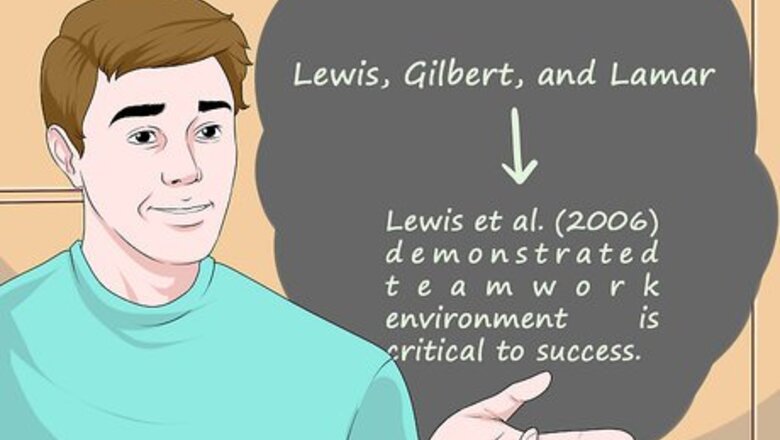
views
X
Research source
A period is always used after et al., since the term is used to abbreviate the Latin term “et alii.” There are several rules, however, both formal and informal, that are required for proper usage of et al.
Using Et Al. Formally

Use et al. with in-text citations. The intention is to make references shorter and easier to absorb. Aside from authors, this can also apply to characters in a book or novel. In general, it’s used in academic situations or when writing very formally such as in-text citations and parenthetical remarks. If Lewis, Gilbert, and Lamar wrote something about teamwork, the reference could be: ”Lewis et al. (2006) demonstrated teamwork environment is critical to success.”
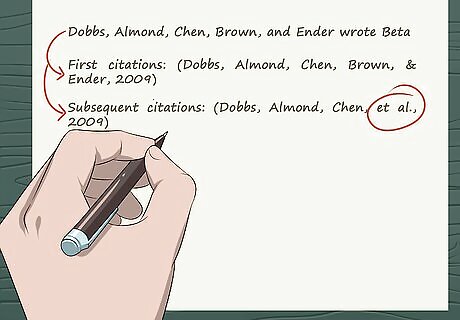
Use et al. after the last dissimilar author. Cite similar references based upon the first different names. Whenever you have multiple, initial authors that are the same, citation should go to the first dissimilar author. This rule does not apply when the leading authors are different. The following examples demonstrate how to solve the dilemma of nearly identical authors. In 2009, Dobbs, Almond, and Chen wrote Alpha First citations: (Dobbs, Almond, & Chen, 2009) Subsequent citations: (Dobbs, Almond, & Chen, 2009) Dobbs, Almond, Chen, Brown, and Ender wrote Beta First citations: (Dobbs, Almond, Chen, Brown, & Ender, 2009) Subsequent citations: (Dobbs, Almond, Chen, et al., 2009) In 2009, Wilson, Dobbs, and Almond wrote Gamma All citations are (Wilson, Dobbs, & Almond, 2009), and do not coincide or conflict in any way with the previous two citations because Wilson is the lead author, and different from the lead author (i.e. Dobbs) on the other two.
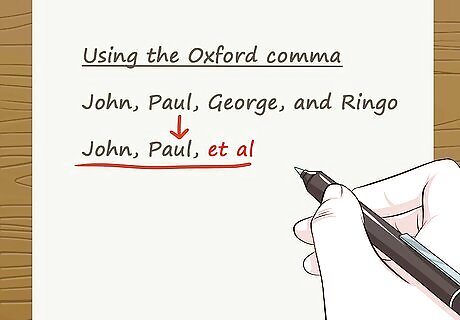
Determine whether to use a comma before et al. There is some confusion and disagreement concerning the usage of a comma before et al. The guidance is based on whether or not the Oxford comma (i.e. the pre-conjunction comma in a list greater than two) is being preferred. In general, however, literally substituting the words “and others” into the phrase can help you make the decision. Use the following examples for guidance: Not using the Oxford comma, “Moe, Curly, Larry and Shemp” would be “Moe, Curly et al.” Using the Oxford comma, “John, Paul, George, and Ringo” would be “John, Paul, et al.”
Differentiating Et Al. Based on the Number of Authors
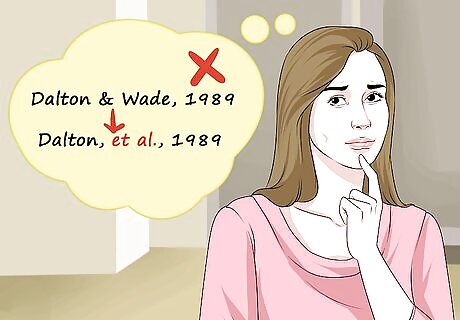
Don’t use et al. if there are fewer than three authors. For both the first and subsequent in-text citations, both the authors should be listed out as (Dalton & Wade, 1989). The usage of et al. should be avoided because et al. always refers to plural authors, and (Dalton, et al., 1989) would indicate two authors aside from Dalton.
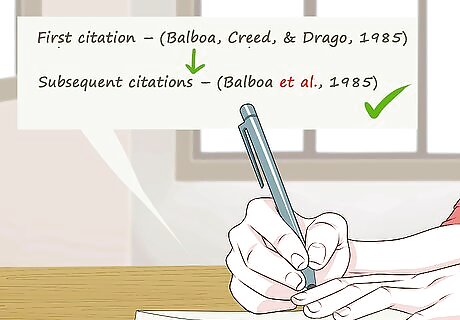
Use et al. on the subsequent citations for three, four, or five authors. Any time you have more than two authors, the potential for using et al. with in-text citation is there. As such, the first citation should spell out all their names, and any subsequent citation can include et al. after the first author. First citation – (Balboa, Creed, & Drago, 1985) Subsequent citations – (Balboa et al., 1985)

Apply et al. to all citations of works with six or more authors. Listing six or more authors is cumbersome, even for the initial reference. As such, using et al. allows the shortening of such references universally. For instance, authors Highway, Choozoo, Jones, Fragetti, Profile, and Johanson would be cited in-text as follows: First citation – (Highway et al., 1986) Subsequent citations – (Highway et al., 1986)
Using Et Al. Informally

Incorporate et al. into work emails. When referring to a group of coworkers, it may be easier to use et al. than list everyone who made a contribution. Keep your audience in mind when using et al. in informal writing. If they are unlikely to understand what it means, substitute “and others” or “and the rest.” The following general writing examples work well: ”We should go to the work overtime this weekend Jim, Jesse, Brian et al. to get the project done.” ”If David et al. get the financing, we can move forward with the prototype.”
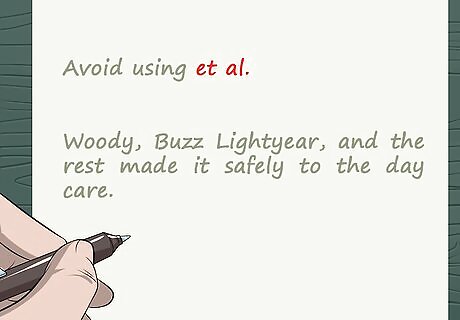
Avoid using et al. in general, everyday speech. It is generally used with academic writing and doesn’t translate well into speech. Opt to include your entire list or say some shorter English equivalent in place of this Latin abbreviation. Instead of et al., use a variation as in the following examples. ”The Bulls would have lost the game if not for Jordan and the other guards.” ”Woody, Buzz Lightyear, and the rest made it safely to the day care.”
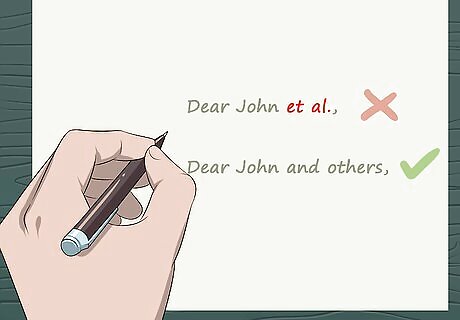
Don’t use et al. with a salutation. Most greetings, like “Dear,” are friendly in nature. The usage of et al., which may confuse readers because of usage and/or punctuation, is very stiff in nature, not friendly at all. On top of that, it’s largely uncommon in introductions, and the mere inclusion will have the recipients questioning whether the usage is proper. Try substituting an appropriate plural word for the group you’re addressing, instead of forcing et al. into a greeting.














Comments
0 comment